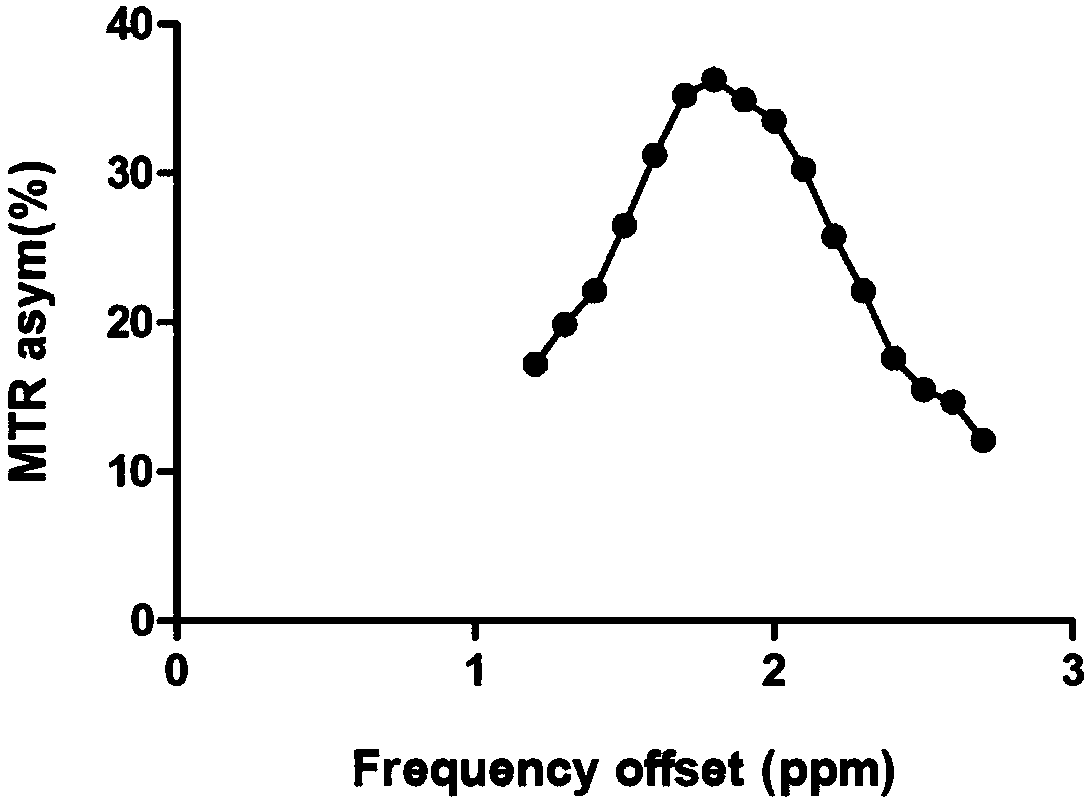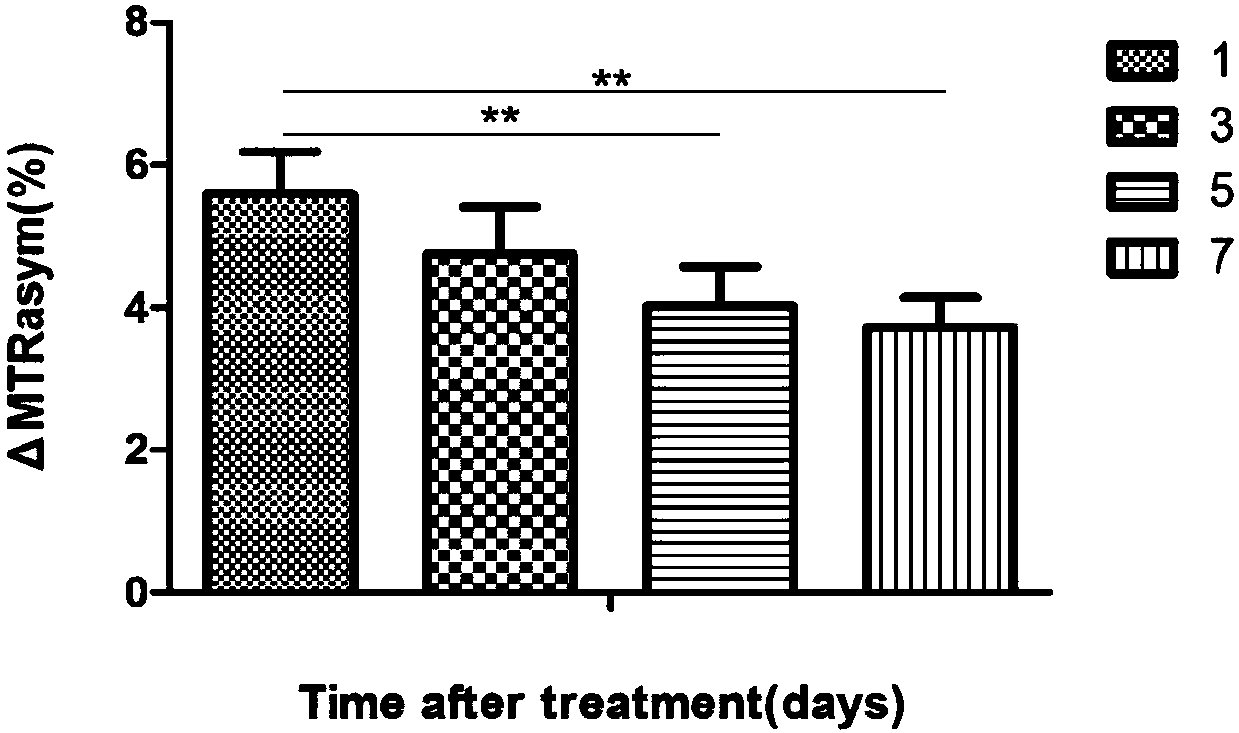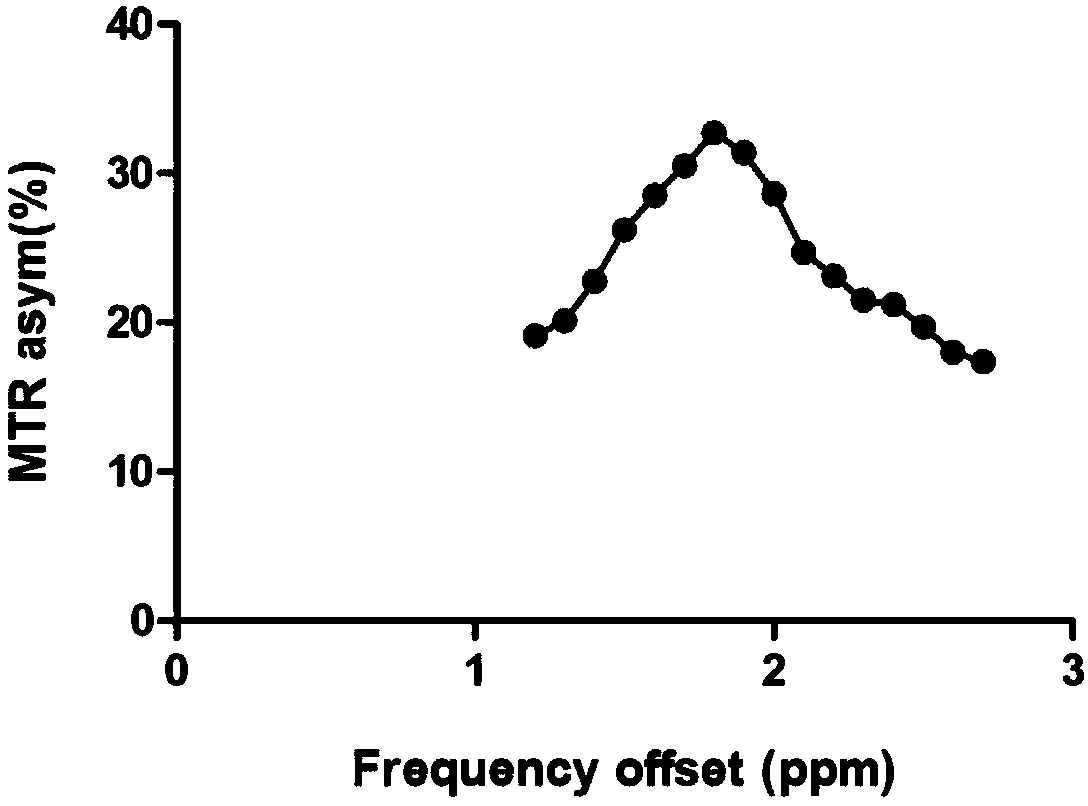Non-invasive traceable biological material and preparation method thereof
A biomaterial and tracer technology, applied in the field of tissue engineering and medical materials, can solve the problems of self-tissue damage, immune rejection, insufficient donor source, etc., and achieve strong tissue penetration, high sensitivity, and enhanced strength. Effect
- Summary
- Abstract
- Description
- Claims
- Application Information
AI Technical Summary
Problems solved by technology
Method used
Image
Examples
Embodiment 1
[0052] A method for preparing a non-invasive traceable biomaterial for repairing tissue damage, comprising the following steps:
[0053] 1. Buy Green, adjust the concentration of Green to 7mg / ml;
[0054] 2. After it is completely dissolved, put it into the mold, put the mold into liquid nitrogen to freeze, and then put it in a freeze dryer for 12 hours to freeze-dry to obtain the Green material, which is a three-dimensional collagen material, using 6kGy 60 Co electron beam irradiation is used to sterilize the green material;
[0055] 3. Place the Green material in a cross-linking solution containing 4mM EDC and 2.5mM NHS for cross-linking, place it at 37°C for 3-4 hours, and finally wash with PBS for 4-8 hours, and deionized water for 4-8 hours ;
[0056] 4. Complete CEST MRI monitoring with 11.7 T Bruker Avance spectrometer with 15mm coil. Place the sample in a direction parallel to the Z axis, the parameters are: slice thickness = 1mm, FOV = 1.4*1.3cm, matrix = 128x64, R...
Embodiment 2
[0059] The preparation of the non-invasive traceable material is the same as the operation steps in Example 1;
[0060] The concentration of Grignard in it is up to 10mg / ml, and the concentration of the crosslinking agent in the crosslinking solution is: 15mM EDC and 5mM NHS; image 3 and Figure 4 The experimental results are shown, where ** means P image 3 It can be seen from the images captured by CEST that the biological material has the highest MTR asymmetry values at 1.8ppm; Figure 4 It can be seen that after the biomaterial is implanted in the body, the CEST contrast value gradually decreases as time increases, and the CEST contrast value decreases on the seventh day compared with the first day, and the difference is statistically significant; the decrease in CEST signal may be It is caused by changes in material composition and is closely related to the degradation of materials in vivo.
Embodiment 3
[0062] The preparation of the non-invasive traceable material is the same as the operation steps in Example 1;
[0063] The Grignin concentration is up to 15mg / ml, and the concentration of the crosslinking agent in the crosslinking solution is: 10mM EDC and 8mM NHS; Figure 5 and Figure 6 The experimental results are shown, and ** in the figure means P Figure 5 It can be seen from the images captured by CEST that the biological material has the highest MTR asymmetry values at 1.8ppm; Figure 6 It can be seen that after the biomaterial is implanted in the body, the CEST contrast value gradually decreases as time increases, and the CEST contrast value decreases on the seventh day compared with the first day, and the difference is statistically significant; the decrease in CEST signal may be It is caused by changes in material composition and is closely related to the degradation of materials in vivo.
[0064] The experimental results show that the non-invasive traceable bio...
PUM
 Login to View More
Login to View More Abstract
Description
Claims
Application Information
 Login to View More
Login to View More - R&D
- Intellectual Property
- Life Sciences
- Materials
- Tech Scout
- Unparalleled Data Quality
- Higher Quality Content
- 60% Fewer Hallucinations
Browse by: Latest US Patents, China's latest patents, Technical Efficacy Thesaurus, Application Domain, Technology Topic, Popular Technical Reports.
© 2025 PatSnap. All rights reserved.Legal|Privacy policy|Modern Slavery Act Transparency Statement|Sitemap|About US| Contact US: help@patsnap.com



